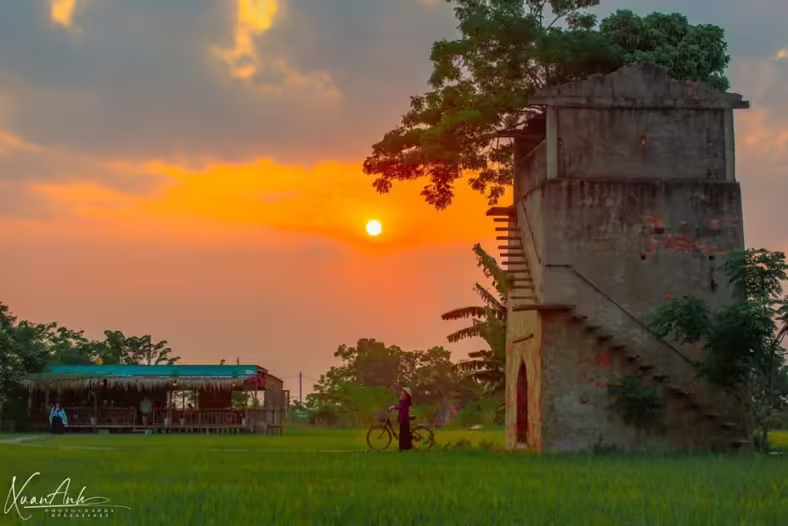
Hoi An Villages: Explore Beyond the Ancient Town+ + Videos highlighting each village
A visit to the villages of Hoi An is a truly rewarding experience. It is a chance to connect with the local people, learn about their culture, and escape the hustle and bustle of the tourist crowds. Let’s explore the most interesting villages in Hoi An.
Tra Que Vegetable Village
Cam thanh Coconut Village
Thanh Ha Potery Village
Kim Bong Carpentry Village
Lo Gach cu Farm
Hoi An Silk Village
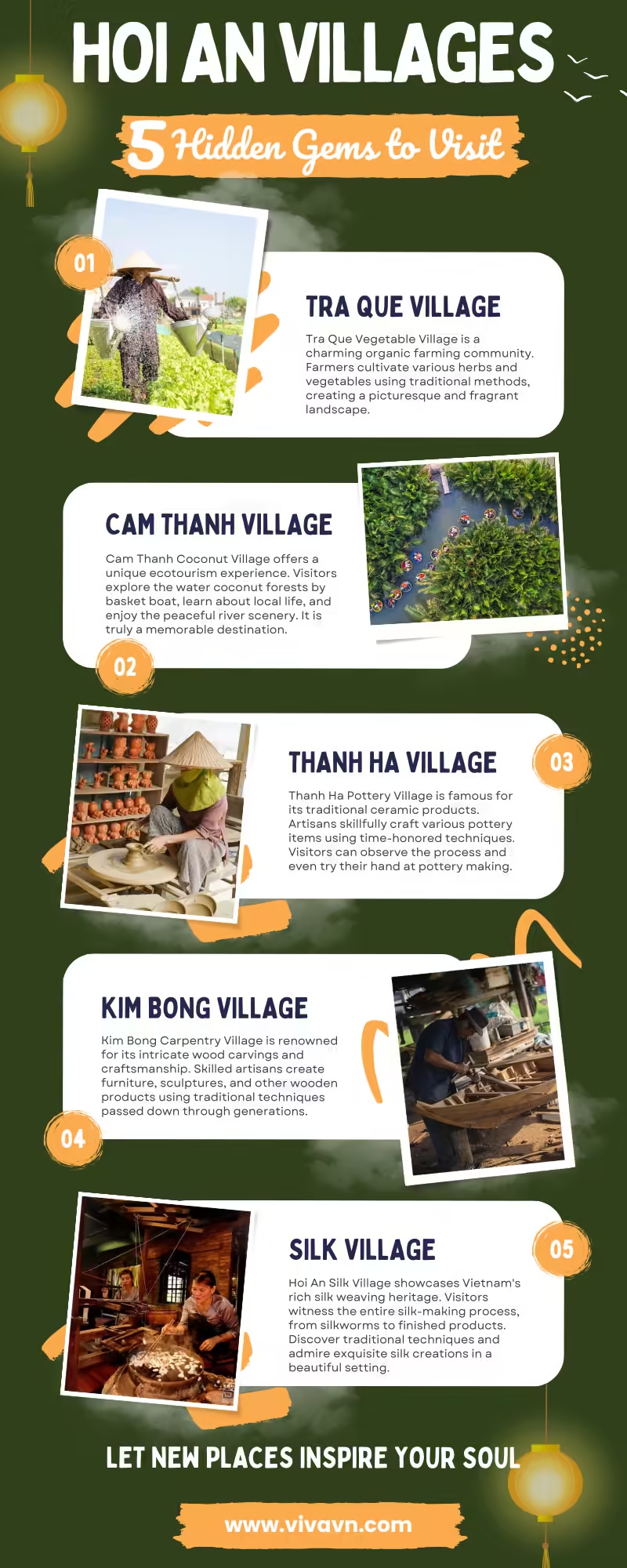
Tra Que Vegetable Village
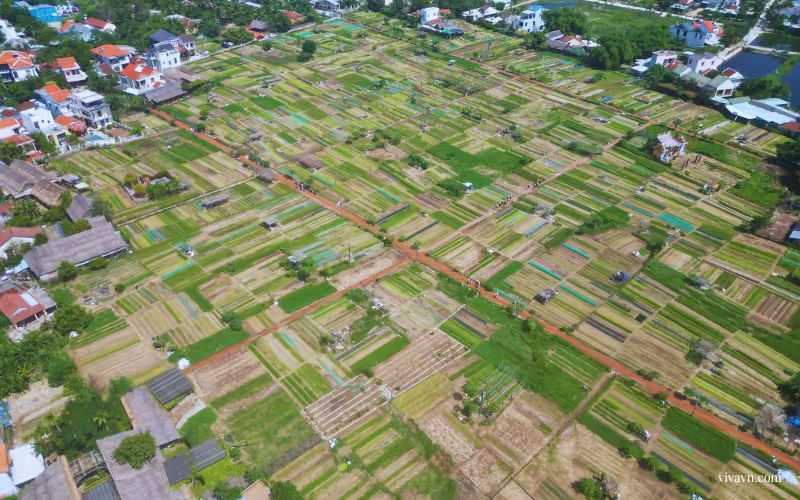

Overview
 Vietnamese name: Làng rau Trà Quế
Vietnamese name: Làng rau Trà Quế Area: Over 40 hectares
Area: Over 40 hectares Location: Just 4 km northeast of Hoi An’s Ancient Town
Location: Just 4 km northeast of Hoi An’s Ancient Town Getting there: You can reach the village from Hoi An by car, motorbike, bicycle, or even on foot.
Getting there: You can reach the village from Hoi An by car, motorbike, bicycle, or even on foot. Entrance fee: 35,000 VND (about 1.44 USD)
Entrance fee: 35,000 VND (about 1.44 USD)The first village you should visit is Tra Que Vegetable Village, just a short 4 km ride northeast of Hoi An’s Ancient Town. This picturesque village is home to around 200 families, who have continued the tradition of farming herbs and vegetables for over 400 years! They grow everything organically—no pesticides or chemical fertilizers here. Instead, they fertilize their crops with a type of seaweed from a nearby lagoon and use native seeds, giving their produce a unique, fresh flavor that you won’t find anywhere else.
So, what can you expect when you visit?
 A peaceful countryside scene, with lush green fields of herbs and vegetables.
A peaceful countryside scene, with lush green fields of herbs and vegetables. Meet local farmers and learn firsthand from them how they grow their crops.
Meet local farmers and learn firsthand from them how they grow their crops. You can roll up your sleeves and try planting, watering, and fertilizing the vegetables.
You can roll up your sleeves and try planting, watering, and fertilizing the vegetables. Enjoy traditional Vietnamese dishes that you cook yourself, guided by the local chefs.
Enjoy traditional Vietnamese dishes that you cook yourself, guided by the local chefs.Tip: Biking or walking through the village is the best way to soak in the full experience. If you’re heading there in the morning, go before 11 AM, or after 3 PM in the afternoon—those are the times when you’ll catch the farmers hard at work in the fields.
FAQs: Top questions about Tra Que Vegetable Village
What are the opening hours of Tra Que Vegetable Village?
Tra Que Vegetable Village is open daily from 8:00 AM to 6:00 PM.
Do I need to pay an entrance fee to visit Tra Que Vegetable Village?
Yes, visitors need to pay an entrance fee of 35,000 VND (~1.44 USD) to enter Tra Que Vegetable Village. While exploring the village, you can also enjoy a complimentary basil seed drink (nước hạt é) at a local café.

Does the entrance fee to Tra Que Vegetable Village include a cooking class?
No, the entrance fee to Tra Que Vegetable Village only covers access to the village. If you want to join a cooking class at one of the local restaurants, you will need to book and pay separately.
What is the best way to reach Tra Que Vegetable Village from Hoi An?
The best way to reach Tra Que Vegetable Village from Hoi An is by bicycle. The village is only about 4 km northeast of Hoi An’s Ancient Town, making it a short and scenic ride through peaceful countryside roads. Renting a bicycle is an affordable and eco-friendly option, allowing you to enjoy the fresh air and beautiful surroundings along the way.
Cam Thanh Coconut Village
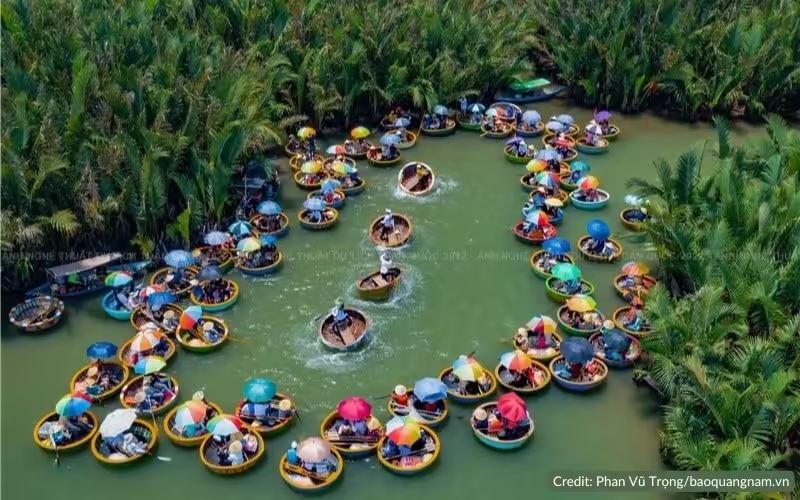

Overview
 Vietnamese name: Rừng dừa Cẩm Thanh
Vietnamese name: Rừng dừa Cẩm Thanh Area: Over 300 hectares
Area: Over 300 hectares Location: Just 5 km southeast of Hoi An’s Ancient Town
Location: Just 5 km southeast of Hoi An’s Ancient Town Getting there: You can reach the village from Hoi An by car, motorbike, bicycle, or even on foot.
Getting there: You can reach the village from Hoi An by car, motorbike, bicycle, or even on foot. Entrance fee: 30,000 VND.
Entrance fee: 30,000 VND.Just about 5 kilometers southeast of Hoi An’s Ancient Town, you’ll find the Cam Thanh Coconut Forest, which is also known as Bay Mau Coconut Forest. This unique mangrove ecosystem stretches over 300 hectares, where water coconut palms thrive in brackish waters that flow out into the Cua Dai Sea.
The exciting experiences waiting for you here include:
 Glide through the dense coconut forests in a basket boat, soaking in the raw beauty of the area.
Glide through the dense coconut forests in a basket boat, soaking in the raw beauty of the area. Watch local fishermen skillfully casting their nets to catch fish.
Watch local fishermen skillfully casting their nets to catch fish. Try making fun crafts from water coconut leaves.
Try making fun crafts from water coconut leaves. Enjoy delicious local specialties that showcase the flavors of the region.
Enjoy delicious local specialties that showcase the flavors of the region.Tip: One of the most exciting experiences you can’t miss here is riding the round-basket boats. Skilled boatmen show off their talent by spinning the boats in exciting circles. It’s a fun and unique way to enjoy the beautiful scenery of the coconut forest!
FAQs: Top questions about Cam Thanh Coconut Village
Do I need to pay an entrance fee to visit Cam Thanh Coconut Village?
Yes, there is a small entrance fee to visit Cam Thanh Coconut Village. Additionally, if you’d like to take a basket boat ride, you’ll need to purchase a separate ticket inside the village. The price for a basket boat ride is around 150,000 VND per boat, which fits two people.
Are Bay Mau Coconut Village and Cam Thanh Coconut Village the same?
Yes, Bay Mau Coconut Village is another name for Cam Thanh Coconut Village. The area is famous for its vast water coconut forest and traditional basket boat rides. Locals and visitors often use the two names interchangeably, but they refer to the same destination in Hoi An.
Thanh Ha Pottery Village
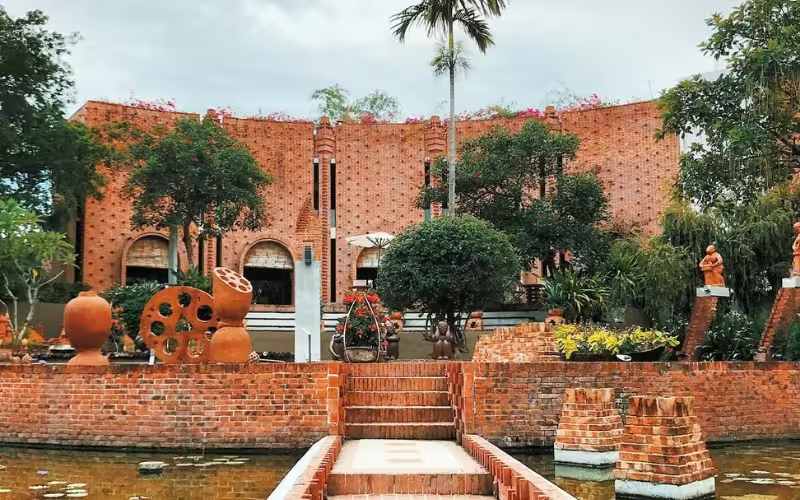

Overview
 Vietnamese name: Làng gốm Thanh Hà
Vietnamese name: Làng gốm Thanh Hà History: 500 years
History: 500 years Location: 4 km west of Hoi An’s Ancient Town
Location: 4 km west of Hoi An’s Ancient Town Getting there: You can reach the village from Hoi An by car, motorbike, bicycle, or even on foot.
Getting there: You can reach the village from Hoi An by car, motorbike, bicycle, or even on foot. Entrance fee: 50,000 VND (about 2 USD)
Entrance fee: 50,000 VND (about 2 USD)Just 4km west of Hoi An’s ancient town, a small village by the Thu Bon River has been crafting pottery for over 500 years. The villagers create everything from everyday items to decorative pieces and toys. Walking through the village, you’ll spot skilled artisans hard at work, shaping clay with their expert hands.
Visiting Thanh Ha Pottery Village offers some unique experiences:
 Stroll through the charming, old streets of the village.
Stroll through the charming, old streets of the village. Watch master craftsmen in action as they create pottery from scratch.
Watch master craftsmen in action as they create pottery from scratch. Try your hand at pottery making with guidance from the locals.
Try your hand at pottery making with guidance from the locals. Explore the Terracotta Park, which resembles a pottery museum and showcases ceramic works from villages across Vietnam.
Explore the Terracotta Park, which resembles a pottery museum and showcases ceramic works from villages across Vietnam.Tip: One of the highlights of visiting Thanh Ha Village is the chance to try your hand at pottery! It’s such a fun experience, and for a small fee, you can create your very own piece of pottery to take home as a unique souvenir. Trust me, it’s worth it!
Kim Bong Carpentry Village
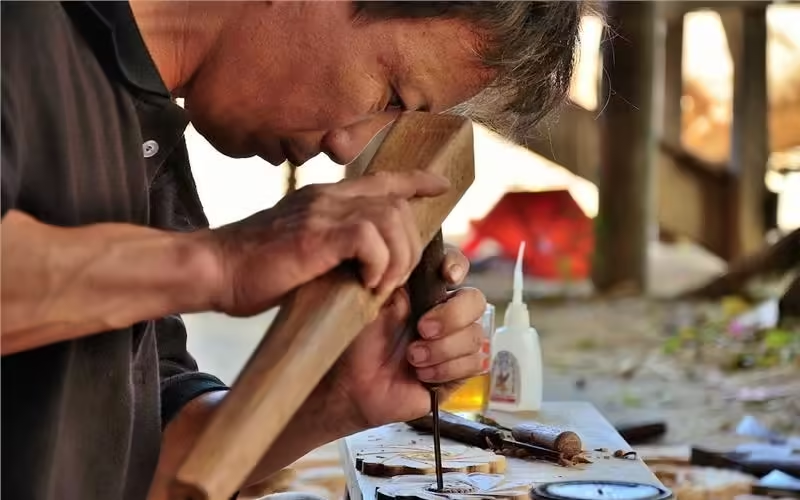

Overview
 Vietnamese name: Làng mộc Kim Bồng
Vietnamese name: Làng mộc Kim Bồng History: 500 years
History: 500 years Location: 3 km southwest of Hoi An’s Ancient Town
Location: 3 km southwest of Hoi An’s Ancient Town Getting there: You can reach the village from Hoi An by car, motorbike, bicycle, or even on foot.
Getting there: You can reach the village from Hoi An by car, motorbike, bicycle, or even on foot. Entrance fee: Free
Entrance fee: FreeThe village is located 3km southwest of Hoi An, but the journey to get there is about 7km due to the winding roads. Kim Bong Carpentry Village has been a hub of craftsmanship since the 16th century. This village is home to talented artisans whose work can still be seen in the centuries-old architecture of Hoi An and the Imperial City of Hue. As you stroll through the village, you’ll find craftsmen diligently creating beautiful wooden pieces.
Here are some experiences you can enjoy during your visit:
 Watch the artisans at work and see their techniques in action.
Watch the artisans at work and see their techniques in action. Admire unique wooden crafts that showcase their skills.
Admire unique wooden crafts that showcase their skills. Listen to fascinating stories about the village’s history.
Listen to fascinating stories about the village’s history.Tip: At Kim Bong village, you can watch skilled craftsmen create beautiful wooden items, and with their help, you can even try making something yourself. It’s a great opportunity to learn and take home a little piece of your experience.
Lo Gach Cu Farm


Overview
 Vietnamese name: Lò Gạch Cũ
Vietnamese name: Lò Gạch Cũ Location: 10 km southwest of Hoi An’s Ancient Town
Location: 10 km southwest of Hoi An’s Ancient Town Getting there: You can reach the village from Hoi An by car, motorbike, bicycle, or even on foot.
Getting there: You can reach the village from Hoi An by car, motorbike, bicycle, or even on foot. Entrance fee: Entrance is free, but visitors are expected to purchase a drink while they’re here.
Entrance fee: Entrance is free, but visitors are expected to purchase a drink while they’re here.If you want to experience the beauty of Vietnamese rice farming and take in postcard-perfect views of lush fields, Lo Gach Cu Farm is a must-visit. Just a 10km drive southwest from Hoi An’s ancient town, you’ll pass through charming villages before arriving at the farm, where an old brick kiln sits amidst picturesque rice paddies.
One of the unique things about this place is how the landscape changes with the seasons. Visit during the early growing season, and you’ll see vibrant green fields. Come during harvest time, and the paddies turn a golden yellow. In the rainy season, the fields are beautifully flooded.
When you visit, you’ll get to experience things like:
 Enjoy the fresh, peaceful atmosphere while taking in the serene views of the rice fields.
Enjoy the fresh, peaceful atmosphere while taking in the serene views of the rice fields. Get hands-on with farming activities like planting rice or feeding the ducks.
Get hands-on with farming activities like planting rice or feeding the ducks. Savor farm-to-table meals and drinks made with ingredients straight from the farm.
Savor farm-to-table meals and drinks made with ingredients straight from the farm.Tip: Be sure to try the tasty dishes made with organic purple rice while you’re here. This beautiful rice is not only packed with nutrients but also adds a lovely flavor to the food.
Hoi An Silk Village


Overview
 Vietnamese name: Làng lụa Hội An
Vietnamese name: Làng lụa Hội An Location: About 2.5km northwest of Hoi An’s Ancient Town
Location: About 2.5km northwest of Hoi An’s Ancient Town Getting there: You can reach the village from Hoi An by car, motorbike, bicycle, or even on foot.
Getting there: You can reach the village from Hoi An by car, motorbike, bicycle, or even on foot. Entrance fee: 100000 VND (about 4 USD)
Entrance fee: 100000 VND (about 4 USD)Over 300 years ago, silk weaving in Hoi An was at its peak, with Hoi An silk being highly prized by royals and aristocrats. It wasn’t just popular locally—Hoi An’s silk was traded and shipped around the world. Today, the Hoi An Silk Village preserves and brings to life the traditional living spaces and silk weaving processes from centuries ago, giving visitors a glimpse into the past.
Here are a few of the cool things you can look forward to when you visit:
 Explore a charming, historic setting with houses built in traditional architecture from 300 years ago.
Explore a charming, historic setting with houses built in traditional architecture from 300 years ago. Watch the traditional silk weaving process in action, with each step authentically recreated by skilled artisans.
Watch the traditional silk weaving process in action, with each step authentically recreated by skilled artisans. Stroll through the mulberry garden, where some of the trees are hundreds of years old.
Stroll through the mulberry garden, where some of the trees are hundreds of years old.- https://www.youtube.com/@VivaVNOfficial
- https://www.facebook.com/vivavnofficial2024
- https://www.pinterest.com/vivavnofficial/
© 2025 VivaVN. All rights reserved.


Leave a Reply